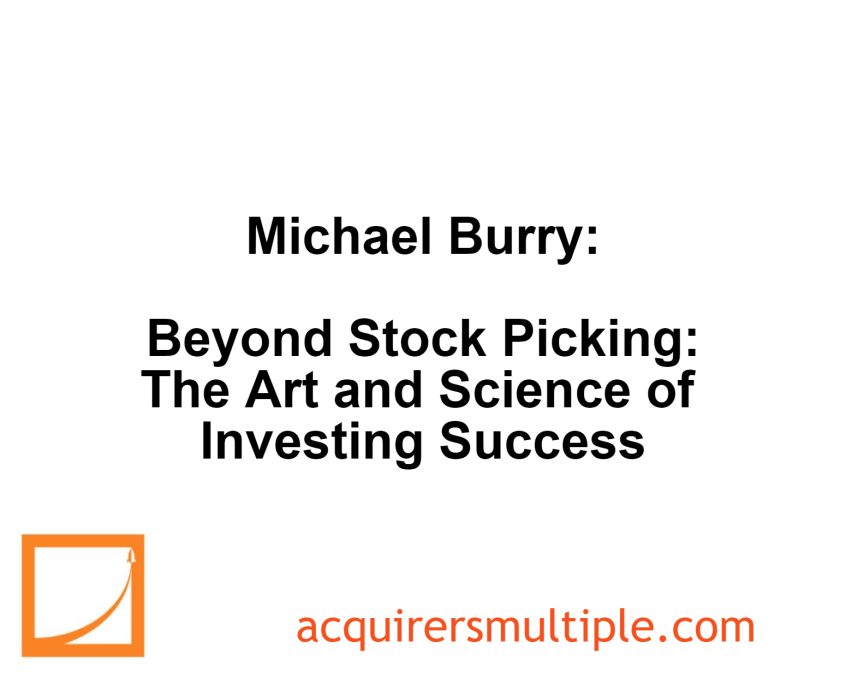In his MSN money articles, Michael Burry discusses the various aspects of successful portfolio management, including the optimal number of stocks, timing of buying and selling, importance of diversification, tax implications, and the role of technical analysis. Here’s an excerpt from the article:
Successful portfolio management transcends stock picking and requires the answer to several essential questions:
What is the optimum number of stocks to hold?
When to buy? When to sell? Should one pay attention to diversification among industries and cyclicals vs. non-cyclicals?
How much should one let tax implications affect investment decision-making? Is low turnover a goal?
In large part this is a skill and personality issue, so there is no need to make excuses if one’s choice differs from the general view of what is proper.
I like to hold 12 to 18 stocks diversified among various depressed industries, and tend to be fully invested. This number seems to provide enough room for my best ideas while smoothing out volatility, not that I feel volatility in any way is related to risk. But you see, I have this heartburn problem and don’t need the extra stress.
Tax implications are not a primary concern of mine. I know my portfolio turnover will generally exceed 50% annually, and way back at 20% the long-term tax benefits of low-turnover pretty much disappear. Whether I’m at 50% or 100% or 200% matters little. So I am not afraid to sell when a stock has a quick 40% to 50% a pop.
As for when to buy, I mix some barebones technical analysis into my strategy — a tool held over from my days as a commodities trader. Nothing fancy. But I prefer to buy within 10% to 15% of a 52-week low that has shown itself to offer some price support. That’s the contrarian part of me.
And if a stock — other than the rare birds discussed above — breaks to a new low, in most cases I cut the loss. That’s the practical part. I balance the fact that I am fundamentally turning my back on potentially greater value with the fact that since implementing this rule I haven’t had a single misfortune blow up my entire portfolio.
I do not view fundamental analysis as infallible. Rather, I see it as a way of putting the odds on my side. I am a firm believer that it is a dog eat dog world out there. And while I do not acknowledge market efficiency, I do not believe the market is perfectly inefficient either.
Insiders leak information. Analysts distribute illegal tidbits to a select few. And the stock price can sometimes reflect the latest information before I, as a fundamental analyst, catch on.
I might even make an error. Hey, I admit it. But I don’t let it kill my returns. I’m just not that stubborn. In the end, investing is neither science nor art — it is a scientific art.
Over time, the road of empiric discovery toward interesting stock ideas will lead to rewards and profits that go beyond mere money. I hope some of you will find resonance with my work — and maybe make a few bucks from it.
You can read the entire article here:
MSN Money Articles – Michael Burry 2000/2001.
For all the latest news and podcasts, join our free newsletter here.
Don’t forget to check out our FREE Large Cap 1000 – Stock Screener, here at The Acquirer’s Multiple:



